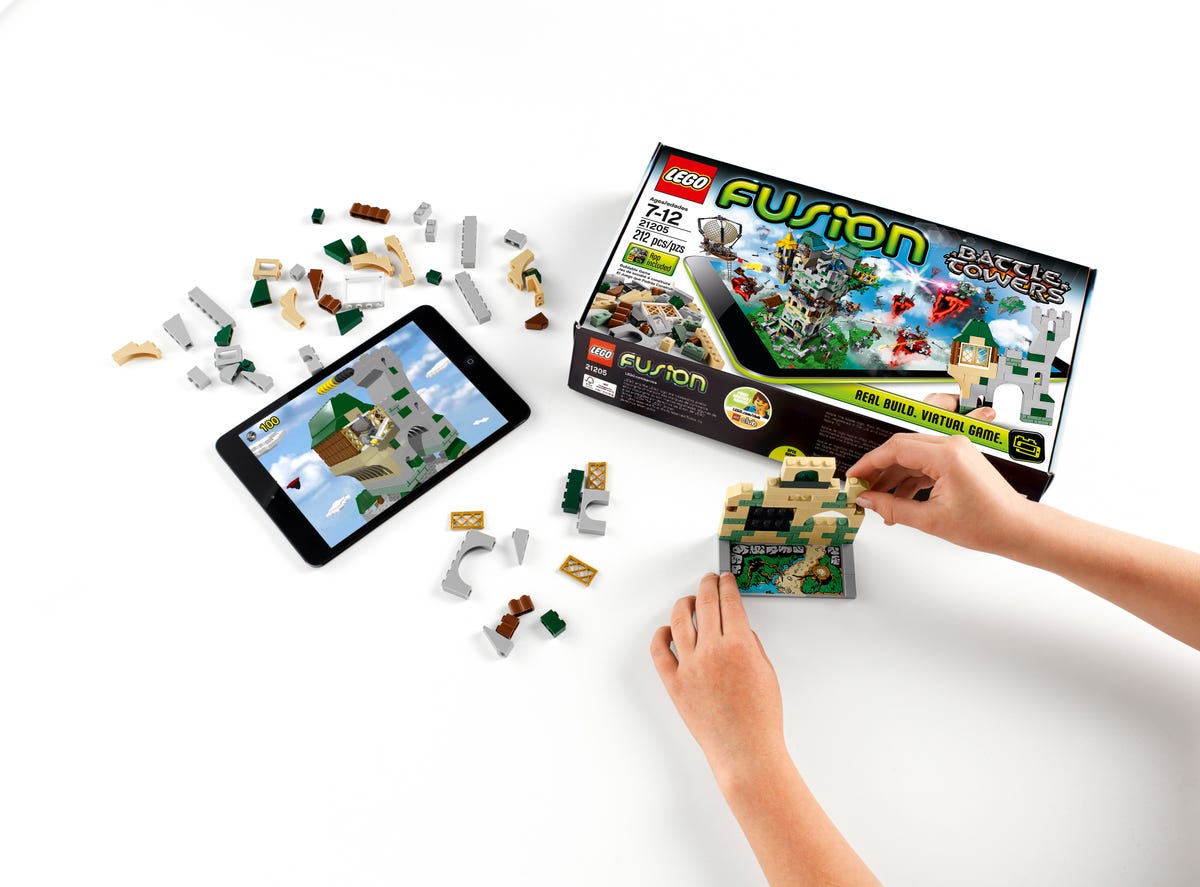
Lego
Legos have always been firmly in one world or another — physical, as in iconic plastic bricks, or virtual, as in video games or more recently, the ” Lego Movie.” But for the first time, the toy giant is straddling both, giving kids a way to mix the physical and the virtual.
Welcome to Fusion, the company’s first-ever attempt to blend playing with Legos with the increasingly familiar mobile app game experience. The premise is simple: start out building houses, cars, and towers in the physical world, and then transport those creations into the virtual. And repeat.
The new effort could be lucrative for Lego, already one of the world’s biggest toy companies, as it seeks to stay relevant to app-addicted kids. The global toy industry was worth $84.1 billion in 2012, according to the Toy Association, but mobile apps for kids are also big business. Lego, which had revenue of $4.58 billion in 2013, thinks kids don’t want to have to choose.
Lego Fusion mixes physical and virtual play (pictures)






+8 more
“We know that for kids, it doesn’t matter if it’s physical or digital play,” said Ditte Bruun Pedersen, a designer in the Lego Future Lab, the company’s skunkworks. “They tend to immerse themselves in worlds. When they play with Lego, they immerse themselves so much. It’s all one world.”
With Lego Fusion, kids will start with one of four sets: Town Master, Battle Towers, Create and Race, or Resort Designer — and begin building. In Town Master, for example, they take on the role of the mayor of a new village, one with no community — yet. The mayor wants to build the perfect town, full of happy people. So the player starts by constructing the facade of a house, or store, or police station out of Lego bricks. But that’s the end of the traditional Lego experience.
Each house is built on top of what’s called a capture plate, a small building platform topped by a scannable bar code. After finishing their facade, kids pull out their iOS or Android device, run the Fusion app, and snap a picture of their project. Thanks to Qualcomm tech integrated into the app, the house suddenly appears in the virtual town, and out steps the first resident.
The sets will each cost $35 (£20, AU$37) and go on sale from August, with pricing and availability outside the US yet to be announced.
Related stories
- Track down ghosts with this ‘Ghostbusters’ Lego Ecto-1
- Yes! Lego green-lights female-scientist minifig set
- The world’s tallest ever Lego tower erected in Hungary
- Please, Lego, build this detailed X-Men mansion
Bruun Pedersen explained that Lego sought to create an “infinity loop” between the physical and the virtual, so as each new town member emerges, he or she expresses a need, perhaps for a newspaper. That means the town requires a newspaper stand, and so back to the plastic bricks the kid goes, ready to add to the physical side of the blossoming community. And back and forth they go, physical to virtual to physical, and so on, completing missions that demand more buildings. Think of it as multidimensional SimCity, for kids.
Lego knows kids want to be social, so Fusion allows them to invite friends they’re connected to via Lego’s ID program to visit. This, of course, is also meant to play up the differences in every kid’s building style, as they’ll be able to see and learn from each other’s work.
Each of the sets has a different design concept — building a tall tower and defending it against attack, for example, or constructing cars to race against friends — but the basic idea remains the same across each of the four sets: Start in the physical, move the virtual, and then circle back around.
Town Master, Create and Race, and Battle Tower will all be released in August. Resort Designer comes out in September. Each set has around 200 bricks — though kids can add bricks from their existing collections to the mix — plus one capture plate. Lego is aiming at kids from ages 7 through 12.
Bruun Pedersen said that the small team at Lego Future Lab began working on Fusion in March 2013. As they’ve tested the all-new product on kids, they’ve learned a lot about how children play. The best thing, Bruun Pedersen said, has been watching the youngest kids’ surprise when they first see their physical creation appear in the digital world. “That magic moment, when they see it come to life,” she said, “it made them so happy…They ran loops around the table.”




